- Clone
- PC61 (See other available formats)
- Regulatory Status
- RUO
- Other Names
- IL-2Rα, Ly-43, p55, Tac
- Isotype
- Rat IgG1, λ
- Ave. Rating
- Submit a Review
- Product Citations
- publications
CD25 is a 55 kD glycoprotein also known as the low affinity IL-2Rα, Ly-43, p55, or Tac. It is expressed on activated T and B cells, thymocyte subsets, pre-B cells, and T regulatory cells. In association with CD122 (IL-2Rβ) and CD132 (common γ chain), CD25 forms the high affinity signaling IL-2 receptor.
Product DetailsProduct Details
- Verified Reactivity
- Mouse
- Antibody Type
- Monoclonal
- Host Species
- Rat
- Immunogen
- IL-2-dependent cytolytic mouse T-cell clone B6.1
- Formulation
- Phosphate-buffered solution, pH 7.2, containing 0.09% sodium azide
- Preparation
- The antibody was purified by affinity chromatography and conjugated with Spark Blue™ 574 under optimal conditions.
- Concentration
- 0.2 mg/mL
- Storage & Handling
- The antibody solution should be stored undiluted between 2°C and 8°C, and protected from prolonged exposure to light. Do not freeze.
- Application
-
FC
- Recommended Usage
-
Flexi-Fluors™ are provided at a standard 0.2 mg/mL concentration. We recommend titrating this reagent to determine the optimal concentration for each application. For many flow cytometry applications, conjugated antibodies perform well at concentrations ranging from 0.03 to 1.0 µg per million cells in 100 µL. We recommend testing a range of concentrations starting from 10 µg/mL.
For example, make five 1:1 serial dilutions of the 0.2 mg/mL antibody. Add 5 µL of each dilution (including the undiluted antibody) to 100 µL of cells (at 107 cells/mL) to test six concentrations -- 1.0, 0.5, 0.25, 0.125, 0.06, and 0.03 µg per million cells in 100 µL volume. Compare staining patterns or create a titration curve using the MFI or staining index to determine the optimal concentration.
* Spark Blue™ 574 has a maximum excitation of 506 nm and a maximum emission of 574 nm. - Excitation Laser
-
Blue Laser (488 nm)
- Application Notes
-
Additional reported applications (for the relevant formats) include: immunoprecipitation1,2, in vitro blocking of IL-2 binding to low- and high-affinity receptors1-4, growth inhibition of IL-2-dependent T-cell lines1-4, in vivo depletion of CD25+CD4+ Treg cells5-8,10, and immunohistochemical staining of acetone-fixed frozen sections2. PC61 antibody recognizes a different epitope than 3C7 antibody (Cat. No. 101902). For in vivo studies or highly sensitive assays, we recommend Ultra-LEAF™ purified antibody (Cat. No. 102040) with endotoxin < 0.01 EU/µg, Azide-Free, 0.2 µm filtered.
- Additional Product Notes
-
For more information about Flexi-Fluors™, visit our Flexi-Fluor™ page and review FAQs associated with this product line.
-
Application References
(PubMed link indicates BioLegend citation) -
- Lowenthal JW, et al. 1985. Nature 315:669. (IP, Block)
- Ceredig R, et al. 1985. Nature 314:98. (IP, IHC, Block)
- Lowenthal JW, et al. 1985. J. Immunol. 135:3988. (Block)
- Moreau JL, et al. 1987. Eur. J. Immunol. 17:929. (Block)
- Takahashi T, et al. 2000. J. Exp. Med. 192:303. (Deplete)
- Onizuka S, et al. 1999. Cancer Res. 59:3128. (Deplete)
- Lei TC, et al. 2005. Blood 105:4865. (Deplete)
- Pasare C, et al. 2004. Immunity 21:733. (Deplete)
- León-Ponte M, et al. 2007. Blood 109:3139.
- Cao OW, et al. 2007. Blood doi:10.1182/blood-2007-02-073304. (Deplete)
- Benson MJ, et al. 2007. J. Exp. Med. doi:10.1084/jem.20070719.
- Liu F, et al. 2011. Arch Toxicol. 85:1383. PubMed
- Anguela XM, et al. 2013. Diabetes. 62:551. PubMed
- RRID
-
AB_3662519 (BioLegend Cat. No. 285179)
Antigen Details
- Structure
- Forms high affinity IL-2R with IL-2Rβ (CD122) and IL-2Rγ (CD132), 55 kD
- Distribution
-
Activated T cells and B cells, thymocyte subset, pre-B cells, T regulatory cells
- Function
- IL-2 receptor
- Ligand/Receptor
- IL-2
- Cell Type
- B cells, T cells, Thymocytes, Tregs
- Biology Area
- Immunology
- Molecular Family
- CD Molecules, Cytokine/Chemokine Receptors
- Antigen References
-
- Taniguchi T, et al. 1993. Cell 73:5-8.
- Waldmann TA. 1991. J Biol Chem. 266:2681-4.
- Read S, et al. 2000. J Exp Med. 192:295-302.
- Lowenthal JW, et al. 1985. J Immunol. 135:3988-94.
- Gene ID
- NA
- UniProt
- View information about CD25 on UniProt.org
Related FAQs
- What are Flexi-Fluors?
-
Flexi-Fluors are rapidly made-to-order conjugated antibodies. The technology, manufacturing processes, and specifications used to create Flexi-Fluors are the same as our regular catalog products. However, the optimal concentration and performance of each Flexi-Fluor must be determined by the customer.
- How quickly will I receive my order?
-
We aim to ship Flexi-Fluors within 2-3 weeks of receipt of your order. However, depending on your location, shipping times may vary.
- How are Flexi-Fluors different from regular catalog products?
-
Flexi-Fluors are made on demand, specifically for you. Flexi-Fluors are manufactured using the same high-quality standards, and specifications as other catalog products. For faster delivery, Flexi-Fluors are not tested by flow cytometry to determine optimal concentrations or evaluate performance. This testing needs to be performed by the customer.
- How do I determine the optimal concentration for using my Flexi-Fluor? How should I titrate my antibody?
-
Flexi-Fluors are provided at a standard 0.2 mg/mL concentration. We recommend that you titrate your antibody to determine the optimal concentration to use for your application. For many flow cytometry applications, conjugated antibodies perform well at concentrations ranging from 0.03 to 1.0 µg per million cells in 100 µL volume. We recommend that you test a range of concentrations starting from 10 µg/mL.
For example, make five 1:1 serial dilutions of your 0.2 mg/mL antibody. Add 5 µL of each dilution (including the undiluted antibody) to 100 µL of cells (at 107 cells/ml) to test six concentrations - 1.0, 0.5, 0.25, 0.125, 0.06, and 0.03 µg per million cells in 100 µL volume. Compare staining patterns or create a titration curve using the MFI or staining index to determine the optimal concentration.
- I can’t find the antibody-dye combination that I need. When will it be available?
-
We continuously update our catalog, introducing scores of new products every month. Please get in touch with our Technical Service team for an update on new products or recommendations for suitable alternatives to complete your panel. Or contact Custom Solutions to inquire about our affordable custom conjugation services.
- I need help to validate the performance of my Flexi-Fluor. Who should I contact?
-
Please get in touch with Technical Service for assistance.
- Can I order more than 50 μg of a Flexi-Fluor?
-
Yes, you can order multiple vials of the same Flexi-Fluor products. We cannot guarantee, however, that these vials will be bottled from the same lot. For bulk single-lot orders, contact our Custom Solutions team.
- What is the expiration date of my Flexi-Fluor?
-
Expiration dates can be found on the vial label or by using our CoA lookup tool.
Other Formats
View All CD25 Reagents Request Custom ConjugationCompare Data Across All Formats
This data display is provided for general comparisons between formats.
Your actual data may vary due to variations in samples, target cells, instruments and their settings, staining conditions, and other factors.
If you need assistance with selecting the best format contact our expert technical support team.
-
APC anti-mouse CD25
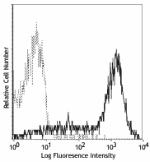
Con A-stimulated (3 days)splenocytes stained with PC61 APC -
Biotin anti-mouse CD25
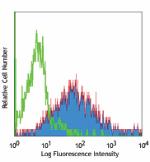
Con A-stimulated C57BL/6 splenocytes (3 days) stained with ... -
FITC anti-mouse CD25
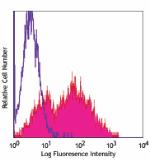
Con-A Stimulated (3 days) BALB/c mouse splenocytes stained w... -
PE anti-mouse CD25
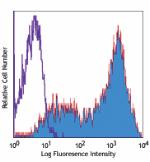
Con A-stimulated (3 days) BALB/c mouse splenocytes stained w... -
PE/Cyanine5 anti-mouse CD25
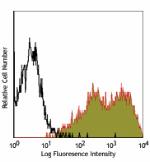
Con A-stimulated (day-3) C57BL/6 mouse splenocytes stained w... -
Purified anti-mouse CD25
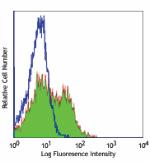
C57BL/6 mouse splenocytes stained with purified PC61, follow... 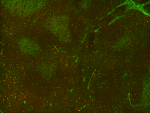
Fresh, frozen mouse spleen was stained with purified CD25 cl... -
PE/Cyanine7 anti-mouse CD25

Con A-stimulated (2 days) BALB/c mouse splenocytes stained w... -
Alexa Fluor® 488 anti-mouse CD25
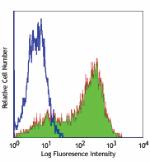
Con A-stimulated (3 days) BALB/c mouse splenocytes stained w... -
Alexa Fluor® 647 anti-mouse CD25
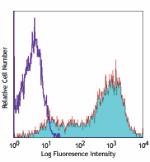
Con A-stimulated (3 days) BALB/c mouse splenocytes stained w... -
Pacific Blue™ anti-mouse CD25

Con A-stimulated (3 days) C57BL/6 mouse splenocytes stained ... -
Alexa Fluor® 700 anti-mouse CD25

Con A-stimulated (day-3) C57BL/6 mouse splenocytes stained w... -
APC/Cyanine7 anti-mouse CD25
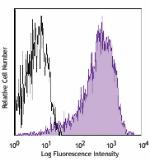
Con A-stimulated (day-3) C57BL/6 mouse splenocytes stained w... -
PerCP/Cyanine5.5 anti-mouse CD25

Con A-stimulated C57BL/7 splenocytes (Day 3) stained with PC... -
PerCP anti-mouse CD25
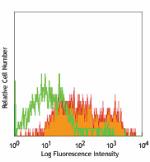
Con A-stimulated C57BL/7 splenocytes (Day 3) stained with P... -
Brilliant Violet 421™ anti-mouse CD25
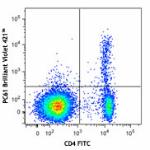
C57BL/6 mouse splenocytes were stained with CD4 FITC and CD2... 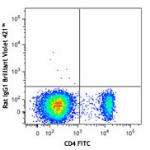
-
Brilliant Violet 605™ anti-mouse CD25
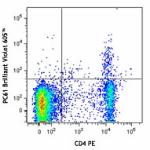
C57BL/6 mouse splenocytes were stained with CD4 PE and CD25 ... -
Brilliant Violet 650™ anti-mouse CD25
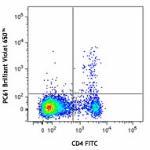
C57BL/6 mouse splenocytes were stained with CD4 FITC and CD2... -
Ultra-LEAF™ Purified anti-mouse CD25
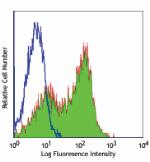
Con A-stimulated (3 days) BALB/c mouse splenocytes stained w... -
Brilliant Violet 510™ anti-mouse CD25

Con A-stimulated (3 days) Balb/c splenocytes were stained wi... -
PE/Dazzle™ 594 anti-mouse CD25

Con A-stimulated (3 days) C57BL/6 mouse splenocytes were sta... -
Brilliant Violet 711™ anti-mouse CD25
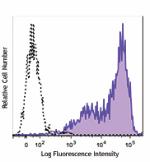
Con A-stimulated (3 days) C57BL/6 mouse splenocytes were sta... -
Brilliant Violet 785™ anti-mouse CD25
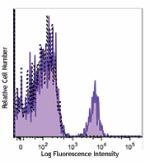
Con A-stimulated (3 days) C57BL/6 mouse splenocytes were sta... -
Alexa Fluor® 594 anti-mouse CD25
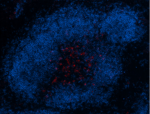
C57BL/6 mice were intraperitoneally injected with 100 µg LEA... -
APC/Fire™ 750 anti-mouse CD25
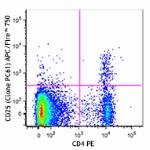
C57BL/6 mouse splenocytes were stained with CD4 PE and CD25 ... 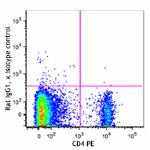
-
TotalSeq™-A0097 anti-mouse CD25
-
KIRAVIA Blue 520™ anti-mouse CD25
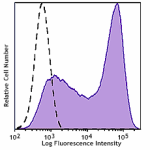
Con A-stimulated (3 days) C57BL/6 mouse splenocytes were sta... 
C57BL/6 mouse splenocytes were stained with CD4 APC and CD25... -
TotalSeq™-B0097 anti-mouse CD25
-
TotalSeq™-C0097 anti-mouse CD25
-
Spark NIR™ 685 anti-mouse CD25 Antibody

Con A-stimulated (day-3) C57BL/6 mouse splenocytes were stai... -
PE/Fire™ 640 anti-mouse CD25
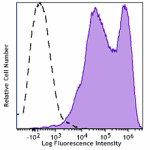
Con A-stimulated (3 days) C57BL/6 mouse splenocytes were sta... 
C57BL/6 mouse splenocytes were stained with anti-mouse CD4 F... -
Spark YG™ 581 anti-mouse CD25

C57BL/6 mouse splenocytes were stained with anti-mouse CD4 P... -
APC/Fire™ 810 anti-mouse CD25
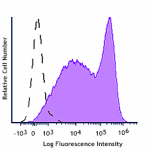
Con A-stimulated (3 days) C57BL/6 mouse splenocytes were sta... -
Brilliant Violet 750™ anti-mouse CD25

Mouse (C57BL/6) splenocytes were stained with anti-mouse CD4... -
PerCP/Fire™ 780 anti-mouse CD25

C57BL/6 mouse splenocytes were stained with anti-mouse CD4 A... -
PE/Fire™ 700 anti-mouse CD25

C57BL/6 mouse splenocytes were stained with anti-mouse CD4 (... -
Spark PLUS UV395™ anti-mouse CD25

C57BL/6 mouse splenocytes were stained with anti-mouse CD4 (... -
Spark Blue™ 574 anti-mouse CD25 (Flexi-Fluor™)
-
PerCP/Fire™ 806 anti-mouse CD25 Antibody

C57BL/6 splenocytes were stained with anti-mouse CD4 (clone ... -
Spark PLUS B550™ anti-mouse CD25

C57BL/6 mouse splenocytes were stained with anti-mouse CD4 (...

 Login / Register
Login / Register 













Follow Us